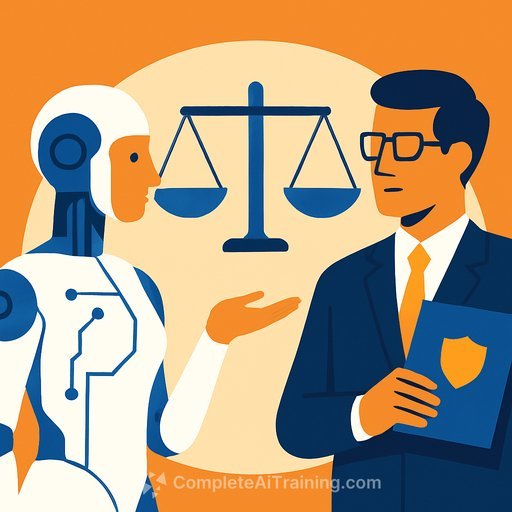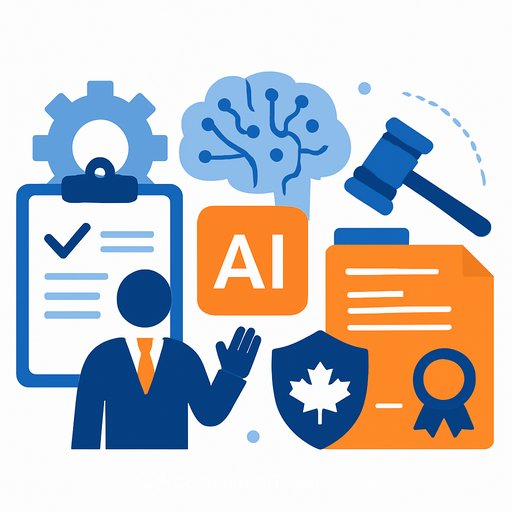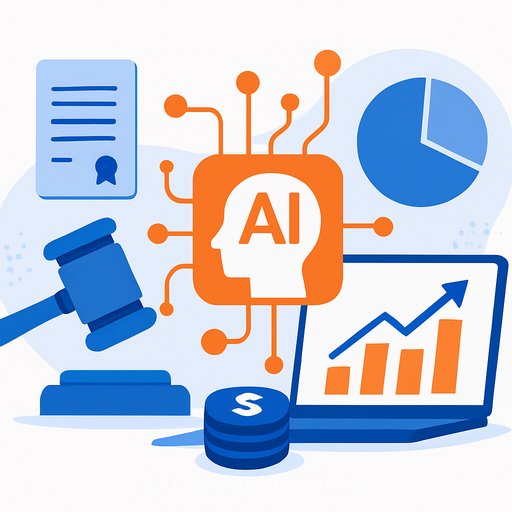Agentic AI in Law: How Controller-Coordinator Systems Think, Learn, and Work With You
Change across the legal profession is accelerating. The next leap isn't another chatbot. It's agentic AI - systems that plan, reason, and coordinate specialized sub-agents the way high-performing legal teams already operate.
For firms and law departments, this is a strategic decision point. The teams that learn how these systems work - and where they fail - will gain advantages in case analysis, litigation strategy, and client delivery.
The anatomy of agentic AI: controllers, sub-agents, and legal reasoning
Agentic AI uses a controller (or coordinator) to break a legal request into steps, assign work to specialized sub-agents, and keep the whole process coherent. Think: facts analysis, law identification, argument generation, counterargument development, and strategy refinement - all orchestrated as one workflow.
Unlike rule-based tools or decision trees, the plan is dynamic. The controller adapts to case nuances, selectively calls research tools or LLMs, and revises the plan if a resource is missing or a step fails.
- Controller: interprets the matter, drafts a plan, routes tasks
- Sub-agents: research, cite-check, analogize, draft, and critique
- Memory and tools: retain findings, use databases, and maintain citations
Training AI on nuanced professional judgment and case law patterns
Raw legal text is not enough. Effective systems are trained on datasets that capture how lawyers think - the steps, standards, and decision points behind the final work product. That includes statutory interpretation, precedent selection, analogical reasoning, and application to facts.
Proprietary datasets that codify reasoning steps are essential. They fill the gap between what courts write and what experienced attorneys actually do to get there. Strong evaluations go beyond benchmarks and test for real comprehension, not pattern matching - for example, removing textual clues in precedent chains to force genuine legal reasoning.
Multi-step planning for litigation strategy and legal research
Agentic AI shifts research and strategy from linear tasks to coordinated analysis. The controller can run parallel sub-tasks: identify controlling law, surface fact-sensitive issues, propose arguments and counterarguments, check citations, and revise the theory of the case based on new findings.
This matters when the path is uncertain. The system can re-plan midstream, try alternative argument trees, and continue progress even if a tool times out or a source is unavailable.
- Research loop: collect facts → map issues → find authority → test analogies → iterate
- Strategy loop: draft arguments → generate counters → stress-test positions → refine themes
- Quality loop: verify citations → align with jurisdiction → audit risks → produce rationale
Trust-building through transparency and interactive review
AI has a jagged capability profile: it can handle complex analysis yet fumble simple tasks. Blind trust fails; so does blanket rejection. The fix is an interactive workflow that makes each step inspectable and sources visible.
- Show your work: expose the plan, intermediate outputs, and linked sources
- Cite-first drafting: every proposition ties to authority before it reaches final draft
- Evidence checkpoints: require human sign-off on key steps (issue framing, controlling law, risk calls)
- Red-team mode: dedicate a sub-agent to generate credible counterarguments
For governance, align review practices with recognized guidance like the NIST AI Risk Management Framework AI RMF.
Professional expertise levels and AI capability mapping
Partners and senior counsel can spot subtle analytical errors quickly. Junior professionals benefit from structured prompts, checklists, and default review gates. Build workflows that meet people where they are while enforcing consistent quality.
- Skill-aware UI: offer explainer views for juniors and compact views for seniors
- Guardrails: required rationale, automatic cite checks, and jurisdiction filters
- Mentorship loop: pair AI output with commentary explaining why an authority controls or not
Long-term limitations: empathy, world modeling, and human connection
Even as capabilities expand, two constraints persist: weak world models and no true empathy. Legal outcomes often hinge on human judgment - credibility, client dynamics, jury perception, and negotiation tone.
Keep professionals at the center. Use AI for scale, speed, and comprehensive coverage; rely on attorneys for judgment, ethics, and human connection.
90-day implementation plan for legal teams
- Weeks 1-2: Identify 3-5 matter types for pilots (e.g., motions to dismiss, contract risk reviews, due diligence memos)
- Weeks 2-4: Map workflows into steps; define sub-agents (research, analogies, drafting, critique, cite-check)
- Weeks 3-6: Build training assets that expose reasoning steps (IRAC structures, issue trees, annotated briefs)
- Weeks 5-8: Set evaluation protocols (hidden-clue precedent tests, jurisdictional accuracy, hallucination rate)
- Weeks 7-10: Launch human-in-the-loop reviews with evidence checkpoints and counterargument tests
- Weeks 9-12: Audit outcomes, refine prompts/tools, and update playbooks firmwide
Operational best practices
- Always-on sourcing: no claims without citations; flag weak authority automatically
- Plan transparency: display the controller's plan and let reviewers approve or modify steps
- Fallback logic: define what the system does when a source is missing or a tool fails
- Jurisdiction control: constrain research and citations by court and date
- Data hygiene: strip client identifiers, log access, and separate workspaces by matter
What success looks like
- Matter intake converts to a clear, editable plan with assigned sub-agents
- Drafts arrive with linked authority, rationale, and counterargument trails
- Fewer reworks, faster motion practice, tighter risk analysis, and consistent work product quality
Further learning
If you're building skills across roles, explore focused training paths: AI courses by job.
The takeaway
Agentic AI is not about replacing lawyers. It's about translating expert legal reasoning into clear, auditable workflows that scale. Keep the human in control, make every step verifiable, and let the system do the heavy lifting across research, drafting, and strategy - with your judgment setting the standard.
Your membership also unlocks:






